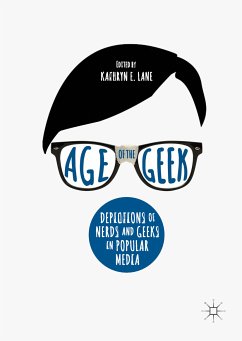
Evil Children in the Popular Imagination (eBook, PDF)
Versandkostenfrei!
Sofort per Download lieferbar
72,95 €
inkl. MwSt.
Weitere Ausgaben:

PAYBACK Punkte
36 °P sammeln!
Focusing on narratives with supernatural components, Karen J. Renner argues that the recent proliferation of stories about evil children demonstrates not a declining faith in the innocence of childhood but a desire to preserve its purity. From novels to music videos, photography to video games, the evil child haunts a range of texts and comes in a variety of forms, including changelings, ferals, and monstrous newborns. In this book, Renner illustrates how each subtype offers a different explanation for the problem of the "evil" child and adapts to changing historical circumstances and ideologi...
Focusing on narratives with supernatural components, Karen J. Renner argues that the recent proliferation of stories about evil children demonstrates not a declining faith in the innocence of childhood but a desire to preserve its purity. From novels to music videos, photography to video games, the evil child haunts a range of texts and comes in a variety of forms, including changelings, ferals, and monstrous newborns. In this book, Renner illustrates how each subtype offers a different explanation for the problem of the "evil" child and adapts to changing historical circumstances and ideologies.
Dieser Download kann aus rechtlichen Gründen nur mit Rechnungsadresse in A, B, BG, CY, CZ, D, DK, EW, E, FIN, F, GR, HR, H, IRL, I, LT, L, LR, M, NL, PL, P, R, S, SLO, SK ausgeliefert werden.












